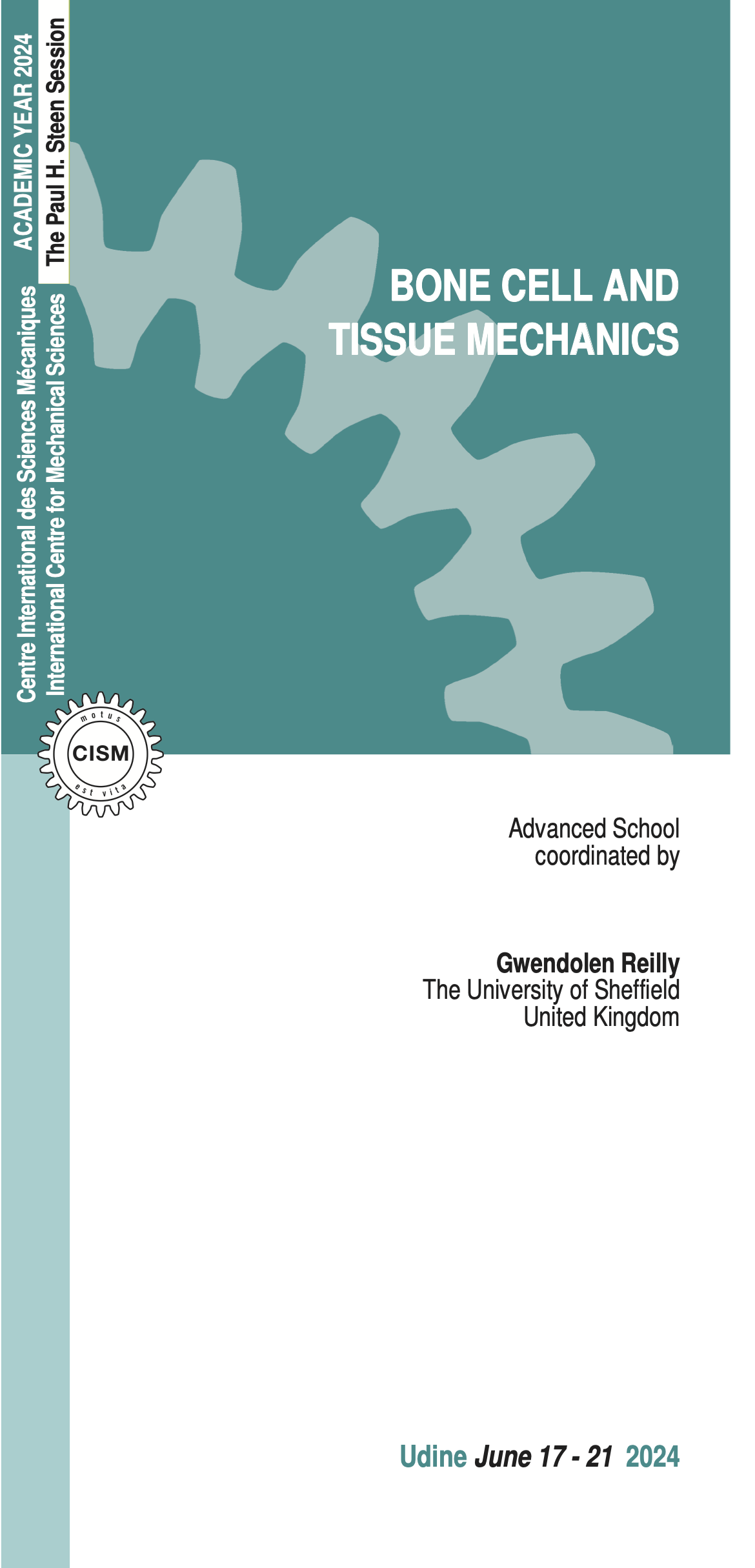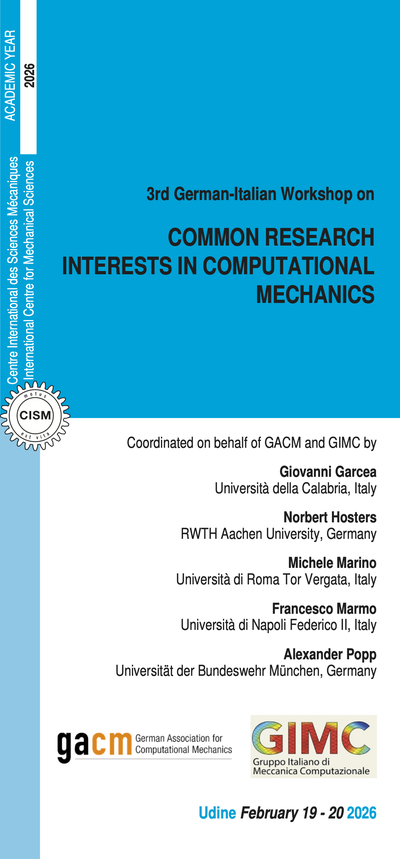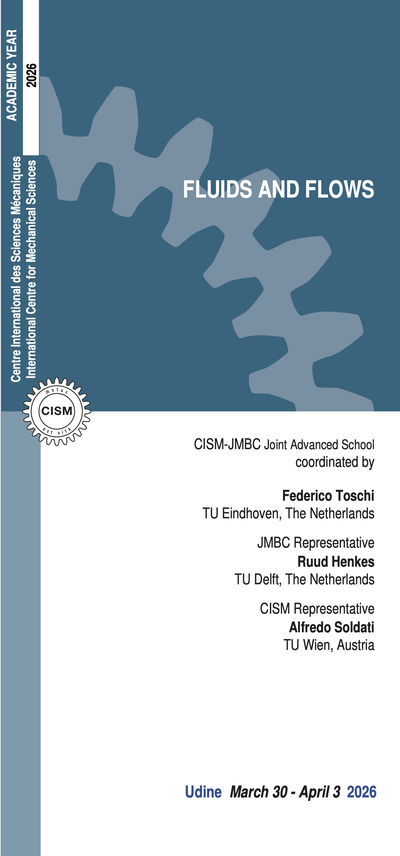Bone is a remarkable material: it is strong yet lightweight, can adapt itself to changes in mechanical loading, lasts for a lifetime and can repair itself after a fracture. However, these repair mechanisms can be inhibited by bone disease and aging. Although biology has revealed many secrets of how bone cells can form and remove bone tissue, the mechanisms that control these processes, and the role of mechanical loading in this, are still not well understood, and therefore there is more work to be done to optimize pharmaceuticals, physiotherapy, medical devices and surgical techniques to improve bone repair. The goal of this course is to provide state-of-the-art information on this topic. To do so, the course will review bone cell and tissue mechanics at all three commonly distinguished levels of structural organization: the bone organ, tissue and cell levels; including multidisciplinary topics such as bone biology, imaging and computational modeling.
At the bone organ level, the focus will be on the diagnosis of bone strength using imaging and computational techniques. Bone remodeling at this level is often considered as an optimization process that adapts bone density and shape to the mechanical loading conditions. Hypothetical models that are developed to describe such adaptations of bone will be discussed. At the tissue level, bone can form remarkable complex porous architectures. This capability enables bone to adapt to a wide range of mechanical conditions, reflected by a wide spectrum of architectures and material properties. Methods to visualize and model the complex structures of this living mineral tissue in 3D in-vivo have become available only over the last 25 years. Hypothetical models describing how these structures evolve, adapt to mechanical loading and can be affected by bone diseases will be discussed.
At the level of the cell, promising candidates for the mechanosensory system will be discussed, as well as possible signaling pathways for the communication between bone cells. At this level, the microporosity of the bone tissue becomes an important factor as fluid flow plays an important role in mechanosensation. Recently developed techniques for visualizing such small structures, stimulating and manipulating cells, such as microfluidics devices for bone cell mechanobiology, 3D printing of bone stimulating implants, and tissue engineering of bone to create humanized 3D models be discussed.
It is intended that the course will function as a forum for the exchange of data, philosophy, and ideas across disciplinary divides and so provide further stimulus for a comprehensive approach to the problems of bone mechanics. To further facilitate this, we will organize a student poster-pitch presentation at the end of the first day. There will be a question and answer session at the end of all other days to stimulate discussions. The target audience are graduate students, PhD candidates and early-career faculty members. We expect an audience as diverse in background as the lecturers, that is to say - spanning across the professional spectrum from biomedical and structural engineers, to biologists, veterinarians and orthopaedic and dental surgeons.
The Computational Mechanics of Bone Tissue. Biological Behaviour, Remodelling Algorithms and Numerical Applications, Belinha, J. Manzanares-Céspedes, M-C. Completo, A.M.G. Springer 2020.
Haycock, J.W. (editor). 3D Cell Culture: Methods and Protocols. Springer 2011.
Rawlinson, S.C.F. (editor). Mechanobiology: Exploitation for medical benefit, Wiley Blackwell, 2017.
Cowin, S.C. and Doty, S.B., Tissue Mechanics, Springer, 2007.
Gefen, A. (editor) Cellular and Biomolecular Mechanics and Mechanobiology, Springer, 2011.
Jacobs, C.R. Introduction to Cell Mechanics and Mechanobiology, Garland Science, 2012.
Silva, M.J. (editor) Skeletal Aging and Osteoporosis: Biomechanics and Mechanobiology, Springer, 2012.
Doblaré, M. and Merodio J. (editors) Biomechanics, Eolss Publishers, 2015.
Pivonka, P. (editor) Multiscale Mechanobiology of Bone Remodeling and Adaptation, CISM International Centre for Mechanical Sciences, 2018.
4 lectures on: Bone tissue formation and repair.
Principles of bone regeneration; from in vivo mechanical forces to tissue strain - how biophysical cues can be used to guide regeneration; Inflammation and angiogenesis in bone repair.
6 lectures on: Bone mineralization and fracture resistance.
Multi-scale structure of bone; mechanisms of deformation and fracture of bone; bone mineralization kinetics; Collagen structure and mechanical behaviour; mineral distribution and its dynamics; bone mineral in osteoporosis.
6 lectures on: Bone biology and bone cell mechanosensitivity.
Cells and tissues; bone cells; bone growth and remodeling; osteocyte mechanosensing; histomechanics of cell biology and bone remodeling.
6 lectures on: Bone imaging across the scales, from molecules, to cells, tissue and up to organ.
Hiierarchical bone functional imaging; in-vivo bone tissue and cell imaging; dynamic imaging; local in vivo environment (LivE) imaging; imaging in tissue engineering and regeneration.
6 lectures on: Creating loading environments for bone cells and tissues.
Traditional animal and cell culture models of bone loading; cell mechanobiological processes modulated by substrate stiffness; 3D printing of biomaterials for mechanobiology; tissue engineering for humanized 3D models.
5 lectures on: The quantification of bone structure, strength and adaptation, with a strong focus on analysis of human bone in-vivo.
Bone structural imaging and quantification; bone strength measurement and computation; bone adaptation measurement and prediction; state-of-the-art of bone strength and adaptation.
ADMISSION AND ACCOMMODATION
The course is offered in a hybrid format, allowing participants the flexibility to attend either in person or remotely via the Microsoft Teams platform.
Limited spots are available for on-site attendance and will be allocated on a first-come, first-served basis.
The registration fees are:
- On-site participation: 600.00 Euro + VAT*
Includes a complimentary bag, five fixed menu buffet lunches, hot beverages, downloadable lecture notes.
Deadline for on-site application is May 17, 2024.
- Live Streaming Online Participation: 250.00 Euro + VAT*
Includes downloadable lecture notes.
Deadline for online application is June 6, 2024.
Application forms should be submitted online through the website: http://www.cism.it.
A confirmation message will be sent to accepted participants.
Upon request, a limited number of on-site participants can be accommodated at CISM Guest House at the price of 35 Euro per person/night (contact: foresteria@cism.it)
* where applicable (bank charges are not included) - Italian VAT is 22%.
CANCELLATION POLICY
Applicants may cancel their registration and receive a full refund by notifying the CISM Secretariat in writing (via email) no later than:
- May 17, 2024 for on-site participants (no refunds after the deadline);
- June 6, 2024 for online participants (no refunds after the deadline).
Cancellation requests received before these deadlines will be subject to a 50.00 Euro handling fee. Incorrect payments are also subject to a 50.00 Euro handling fee.
GRANTS
A limited number of participants from universities and research centres who do not receive support from their own institutions can request a waiver of the registration fee and/or free lodging.
Requests should be sent to the CISM Secretariat by April 17, 2024, along with the applicant's curriculum vitae and a letter of recommendation from the head of the department or a supervisor confirming that the institute cannot provide funding. Preference will be given to applicants from countries that sponsor CISM.





